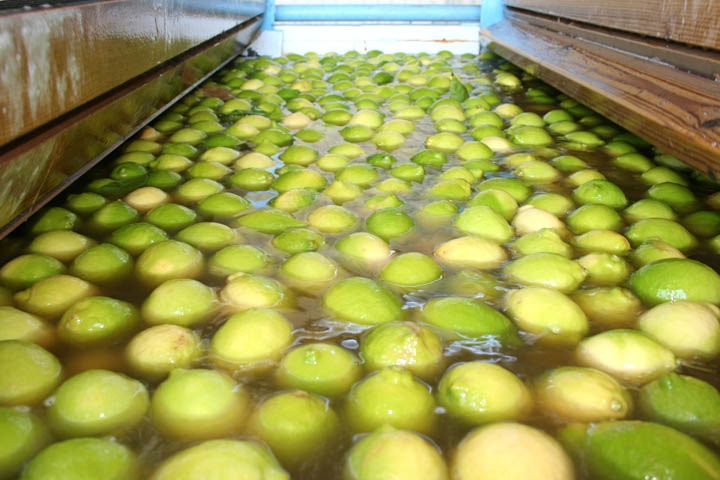June 26, 2012

Carbon dioxide laser-light “etching” to label citrus fruit may soon be allowed by the U.S. Food and Drug Administration, following University of Florida research that shows the process does not make the fruit vulnerable to pathogens or decay.
The carbon dioxide laser etching is intended to replace sticky labels that consumers sometimes find bothersome. And because the etched label can’t be removed, it helps officials more quickly trace food to a specific producer — a big improvement for food safety.
Former University of Florida scientist Greg Drouillard, now with Sunkist Growers Inc. in Fontana, Calif., invented the laser-labeling system.
Ed Etxeberria, a horticultural sciences professor at UF’s Citrus Research and Education Center in Lake Alfred, Fla., has been studying the system for several years, and said he believes it will eventually replace adhesive labels for most produce because it is cost efficient and a time saver.
Research that led to the FDA’s final-rule approval of the system included work by Etxeberria, as well as Michelle Danyluk, a UF assistant professor in food microbiology who is also part of UF’s Institute of Food and Agricultural Sciences, and Jan Narciso, a USDA microbiologist.
There is now a 30-day public comment window about Monday’s FDA ruling, but successful challenges to rulings at this stage are rare.
The UF researchers looked at whether Salmonella bacteria could more easily contaminate the peel of oranges after laser etching and found that it could not. They also found no Salmonella present in juice taken from healthy, etched oranges.
The carbon dioxide laser light device etches a mark a few millionths of an inch deep into the skin of fresh produce, creating a pinhole dot. The tiny marks form letters and numbers that give cashiers and consumers price-look-up, or PLU codes, required for stores’ electronic scanners.
The technology has improved greatly in recent years and researchers have been looking at how it works with other produce, such as tomatoes, avocadoes and peppers, Etxeberria said.
Drouillard said while the system was under FDA review, he’s been tweaking the system. Initially, it could only make squared-off letters and numbers, but now it can create curved lines, allowing for logos and words that are easier to read. He’s also refined the system so that it uses less energy.
You May Also Like




